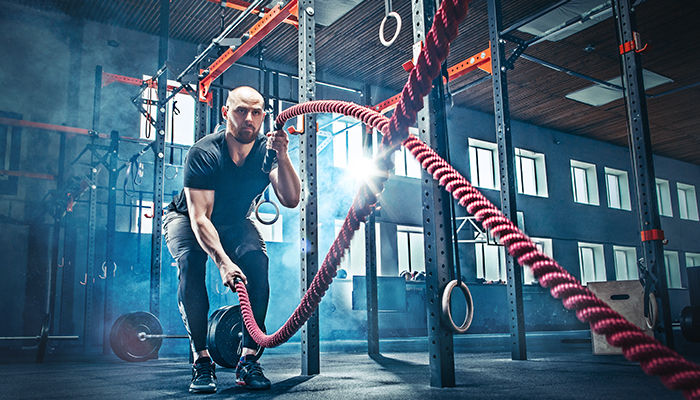9 Methods for Athlete Fitness During Offseason

Part of being a world-class athlete is having world-class fitness to help maximize that athleticism. However, not every sport is played day in day out or week in week out all year long.
With that, there are offseasons, also known as periods where they’re not technically required to be in fantastic shape, but it’s in their best interest to keep it that way to make going into the next season as smooth as possible.
So, while we’re doing some online sports betting on these athletes and teams, they’re rigorously training year-round to ensure they deliver their best performance.
Below, I’ll dive into all things athlete fitness, including various ways they stay in shape during the offseason.
- Cross-Training
- Strength and Conditioning Training
- Cardiovascual Training
- Skill Refinement
- Mobility Training
- Maintaining Diet
- Drills for Specific Sport
- Mental Training
- Rest and Recovery
Cross-Training
For all athletes, engaging in sports or activities outside of the one you play can help strengthen and refine other aspects of your workout regimen.
As an example, if you play football, you could maybe try swimming, cycling, yoga, or even martial arts.
In doing this type of training, they’ll improve their fitness in different ways, can help prevent injuries, help you recover from injuries, and really help stop athletes in the offseason from being bored.
This type of training trains muscles all over your body. If you’re recovering from an offseason injury, many of these activities can be modified to accommodate the athletes’ current capabilities.
Strength and Conditioning Training
With strength and conditioning training for athlete fitness, you can adapt your regimen to specific muscle groups that may not be commonly used in the sport the athlete typically plays. This type of training must be done correctly as it involves weight training, and doing it incorrectly could harm the athlete.
Overall, this type of training has numerous types of exercise routines that can focus on strength, endurance, power, speed, agility, stability, mobility, and more.
As the name of this training states, you’ll be involved in weight training and aerobic conditioning. This is great for sportsman fitness and athletes of all ages.
The benefits of this or pro athlete fitness personal training include an increase in muscle fibers, endurance, and even bone health.
Cardiovascual Training
Where strength and conditioning and even cross-training can focus on building muscle, cardiovascular training focuses more on your heart rate, blood flow, breathing, and legs.
Leg muscles are involved, but lifting weights isn’t part of this.
Some examples of this type of training include walking, running, cycling, dancing, hiking, rowing, climbing stairs, jumping rope, and more.
The benefits of this type of sportsman fitness include strengthening your heart, joints, muscles, and bones.
It also helps fend off things like heart disease. This type of athlete fitness training helps endurance to get through a full season, especially for sports like football, soccer, basketball, and others that require a lot of running.
Skill Refinement and Development
A bit more general, skill refinement and development focus on targeting specific areas that could potentially be weaknesses within your body that, if improved, could enhance your performance.
For example, a running back could work on leg/glute muscles to gain power through opposing tacklers more easily.
Another could include quarterbacks who want to enhance their strength and elasticity to throw a ball downfield.
With this training, you’ll be focused on low-intensity, high-rep drills. It’s not uncommon for athletes to find trainers that specialize in these types of things.
It’s no different than a quarterback working with a “quarterback guru” during the offseason to work on throwing mechanics.
Mobility Training
A type of flexibility training, mobility training works specifically on joint health and overall movement. These can especially help with soft tissues, muscle tension, tendons, ligaments, and more.
Some great exercises within this regimen include single leg deadlift, downward dog yoga pose, lunge and rotation, hip flexor stretch, squats, and hip circles.
Maintaining Diet
This seems obvious, but keeping up with your diet goes hand in hand with offseason training and athlete fitness. It’s easy for athletes that are taken out of their normal routine to perhaps be a bit bored and overeat compared to what they’re used to.
Like hiring special trainers, athletes can also enlist nutritionists and even chefs to prepare meals for them to keep their diet in check. This is a big part of athlete fitness training.
Drills for Specific Sport
While your sport is in season, these athlete fitness programs run drills that are specific to them.
For example, baseball players work on hitting off the tee or doing soft toss, basketball players do catch-and-shoot or two-ball dribbling, and football players use a footwork ladder or run various routes.
During the offseason, why not continue these drills with some teammates to help sharpen rapport and develop skills that directly translate to production on the field, court, or ice?
Mental Training
As opposed to working your muscles or increasing endurance and agility, another thing athletes often participate in is mental training.
This can include talking to a sports psychologist, setting goals, practicing mindfulness, writing down negative thoughts and reframing them, and more.
Being a professional athlete comes with a lot of pressure and constant scrutiny.
New York Jets quarterback Aaron Rodgers is well known for practicing mental training when not playing. He’s even mentioned taking the offseason prior to the 2025 season to take a mental break and evaluate things.
Everyone does this in different ways that make sense to them.
Rest and Recovery
Most importantly, resting your body and mind to allow it to recover is important to ensure there aren’t any unnecessary injuries.
This includes getting sleep, taking days off, and taking time away from training.
A good example is taking a week or two off after the season to get away from everything before restarting the process.